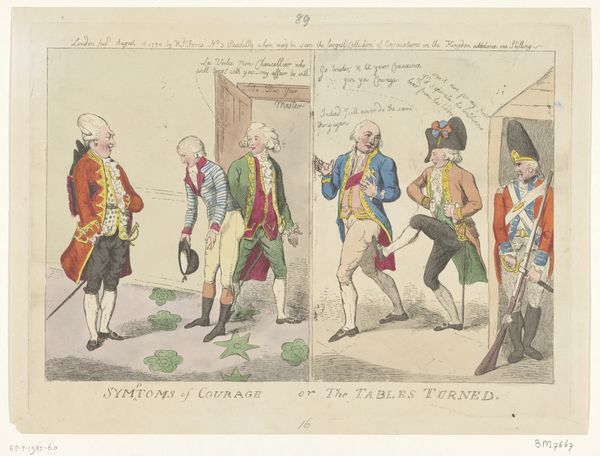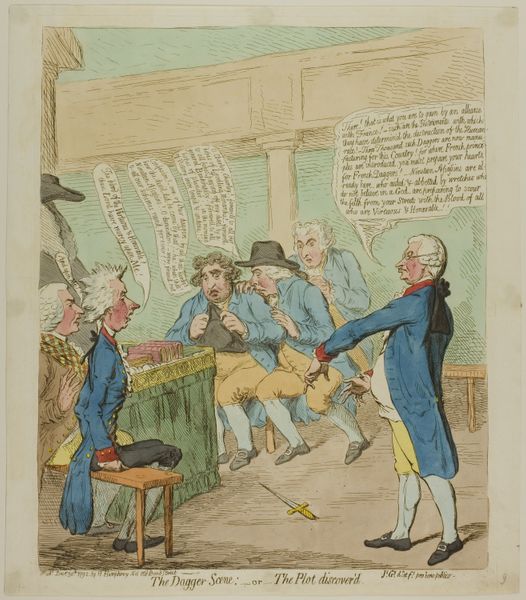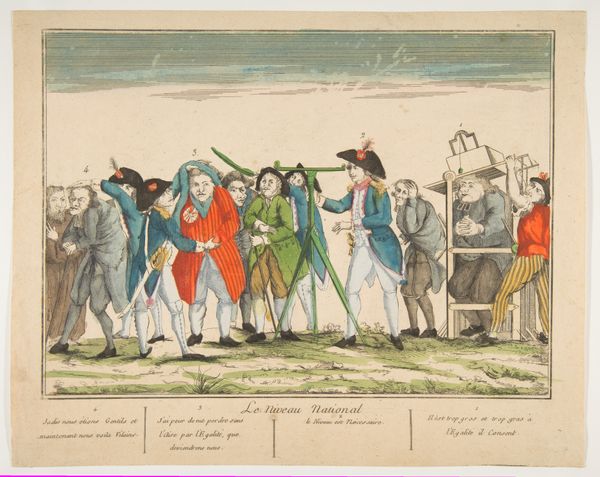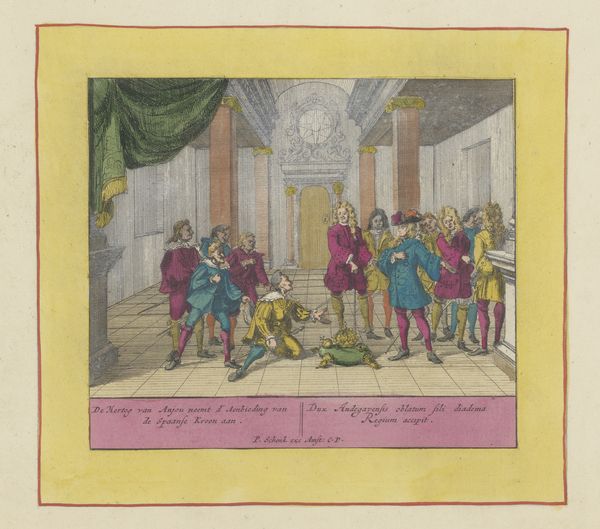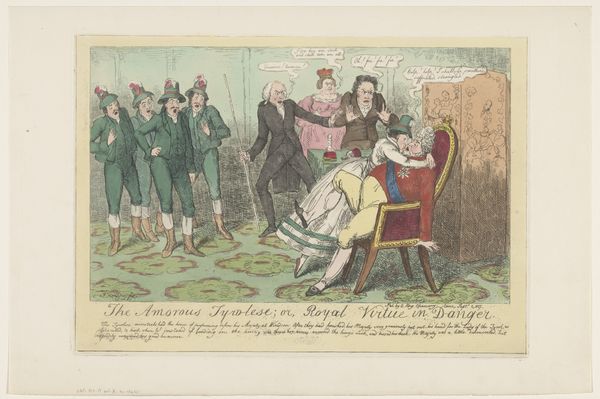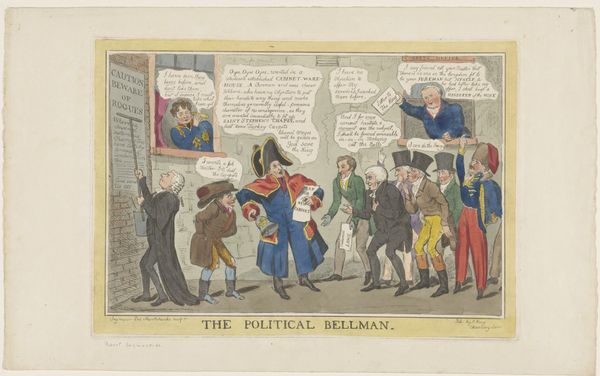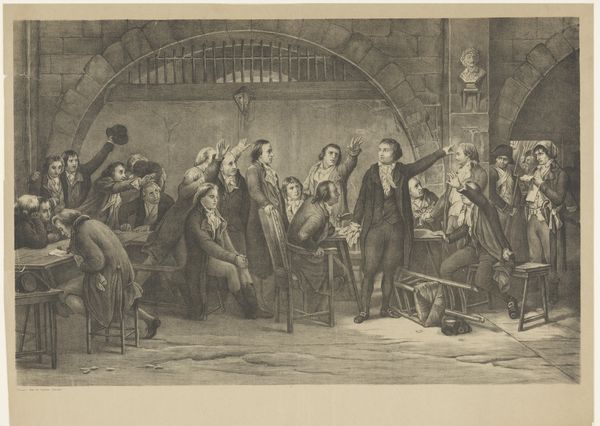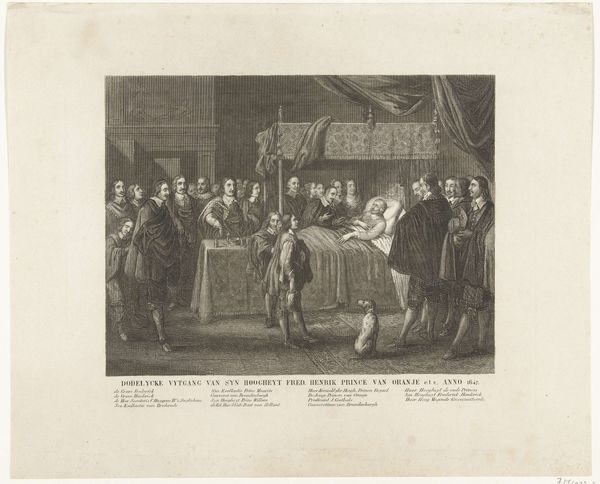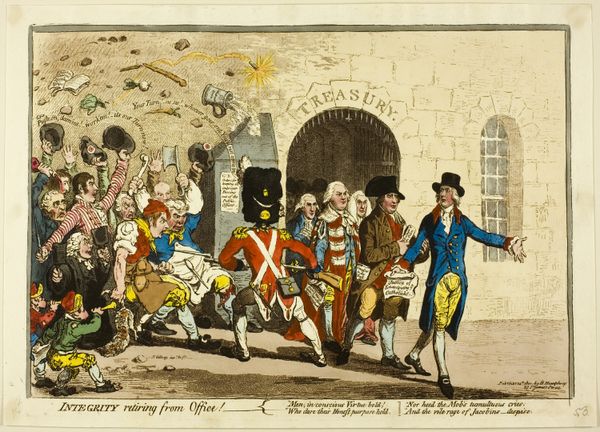
print, etching
# print
#
etching
#
caricature
#
watercolour illustration
#
genre-painting
Dimensions: height 250 mm, width 353 mm
Copyright: Rijks Museum: Open Domain
Curator: Looking at this etching from 1831 titled "Spotprent op de verdeeldheid op de Londense Conferentie," which translates to "Cartoon of the divisions at the London Conference, 1831" by Henry Heath, I am struck by its dynamic composition. There is so much happening, so many voices clamoring for attention. Editor: Indeed, the frenetic energy is palpable. It reminds me of a bustling marketplace, a dense layering of political voices all vying for dominance. The use of etching allows for intricate detailing, particularly in the facial expressions. What can you tell me about its social context? Curator: Well, this print reflects the turmoil surrounding the London Conference of 1830-31, where European powers were grappling with the Belgian Revolution and the reshaping of the Netherlands. The artist depicts various diplomats as caricatures, their exaggerated features and postures reflecting the political divisions and self-interest at play. Editor: Note how the medium – etching, combined with watercolor – makes the figures appear both sturdy and somewhat theatrical. I’m wondering about the printmaking process itself; how did the reproduction and distribution of this image impact public opinion at the time? The satirical portrayal here seems quite pointed. Curator: That's a crucial point. As a print, this artwork could be widely distributed, reaching a broad audience and shaping popular sentiment about the conference and its participants. It served as a form of political commentary, criticizing the negotiations and power dynamics between nations as well as stirring sentiments of nationalism. It also comments on political performativity in an era of instability. Editor: I see a range of emotional states portrayed – arrogance, desperation, agitation. The composition isn’t neutral; it feels critical of the diplomatic process itself. Do we know if similar printed material was distributed by the involved diplomats themselves? Curator: Though it is difficult to determine definitively whether printed materials were distributed directly from diplomats, pamphlets, brochures, books, and articles related to international affairs during the Conference were being written and circulated broadly, suggesting widespread public engagement in matters of state. Editor: Reflecting on this, I’m drawn to the labor involved: the hand of the etcher, the press, the distribution network—a whole system working to create and disseminate political meaning. It certainly changes my understanding of this gathering of individuals as detached from materiality and embodied labor. Curator: Absolutely. This print offers us a powerful glimpse into a specific historical moment and speaks to larger, ongoing conversations about the relationship between art, politics, and social change. Editor: It underscores that even "high politics" are entangled in networks of material production and distribution. It seems as timely as ever.
Comments
No comments
Be the first to comment and join the conversation on the ultimate creative platform.



